How to Make Your Own Cut-Off Jeans
Step-by-step instructions, with tiny tricks that make a big difference.
I get asked how to do this a lot. I suspect it’s because shorts are hip right now and denim cut-offs are as summer as tomato salad. Also, why pay a premium when you can do it yourself?
And you can. Do it yourself. Here’s how…
STEP ONE: Start with a pair of jeans that fit loosely and have something below the knee that irks you (a gaping hole, a too-tapered hem, etc). In her letter last week,
revealed that she likes to size-up in jean shorts (great idea) and I would say that DIY cut-offs are an excellent opportunity to salvage pairs that are a little too big or that slouch more than we like. If they don’t fit perfectly and they’re just taking up space in our closets, snip snip.I have a lot of vintage Levi’s 501 that fall into this category (occupational hazard), and because Levi’s cut-offs are actually the coolest cut-offs on the planet (tell me otherwise), that’s where I went. To my box of weird, ill-fitting 501s. In it, I found a Levi’s Authorized Vintage pair with a button post number corresponding to a factory in Turkey (247; for a refresh on how to read vintage Levi’s, see my Vintage Guides Part I and II). The tag said they were made in 2014 – not so old that to cut them would be criminal. And though I liked how they fit on top and the fading around the hips was gorgeous, someone had shortened them without the original hems. They were perfect for this post.
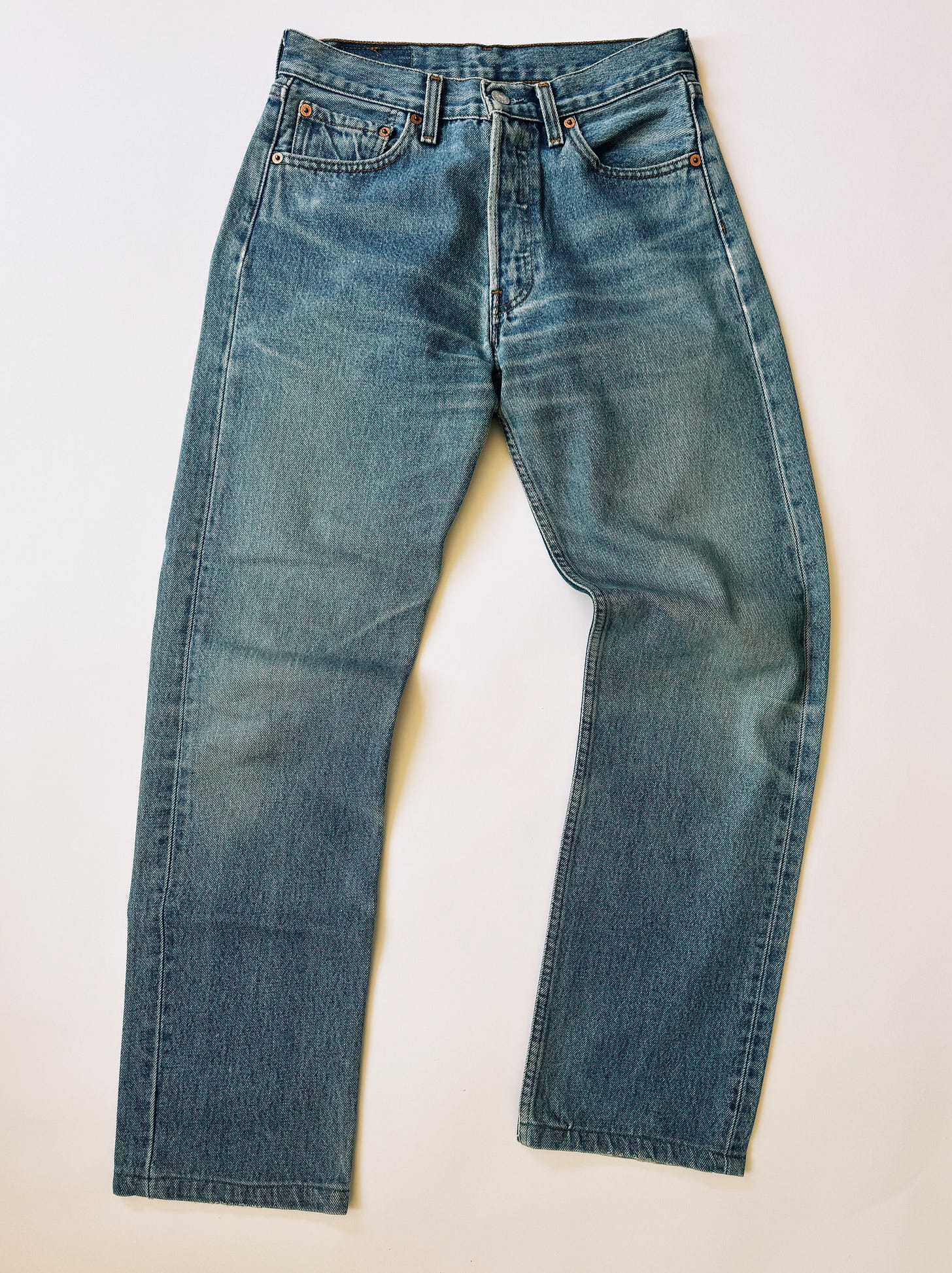
STEP TWO: Determine where to cut. I like to measure the inseam on a pair of shorts I already love, in this case Paige’s Cadee Bermudas, which have an inseam of 11.5” on a size 24 (like most, I’m into longer shorts these days). Remember, inseams typically grade 1/4” per size. The same pair of shorts in a size 25 has an inseam of 11 3/4”, for example.
If you like the length of my Levi’s cut-offs (see below), calculate the inseam you need based on your size (26 = 12”, 27 = 12 1/4”, and so on…) and then add another 1/2”. Why? Because we can always go shorter if needed, and we’re going to lose a bit of length when they fray.
STEP THREE: With a ribbon tape ruler, measure the inseam. Then lay a straight edge (I use a wooden ruler, but you can use any hard line) across the leg where you plan to cut. NOTE! We want to angle the line upwards towards the hip so that it’s slightly pitched on a diagonal. Do not cut perfectly parallel to the hemline. A little lift towards the outer seam will make the hem appear straight when the cut-offs are on. Trust me. It’s cute.
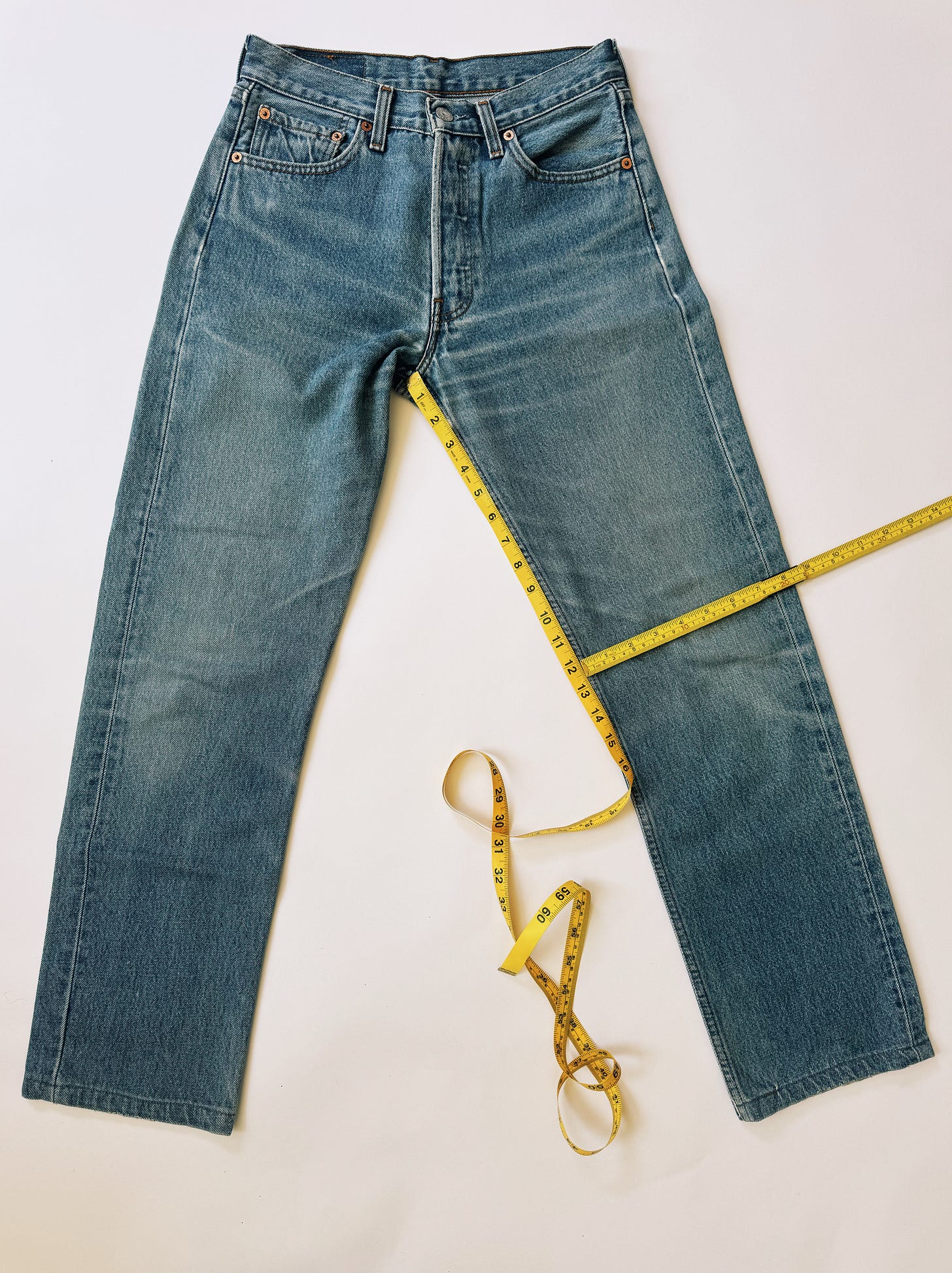
STEP 4: Cut. Don’t hesitate. Use very sharp scissors. Then, take the scrap leg, flip it over and lay it face down on the opposite leg, lining up the hems as meticulously as possible. Use that cut piece like a stencil, and follow the slanted edge to cut the second leg.
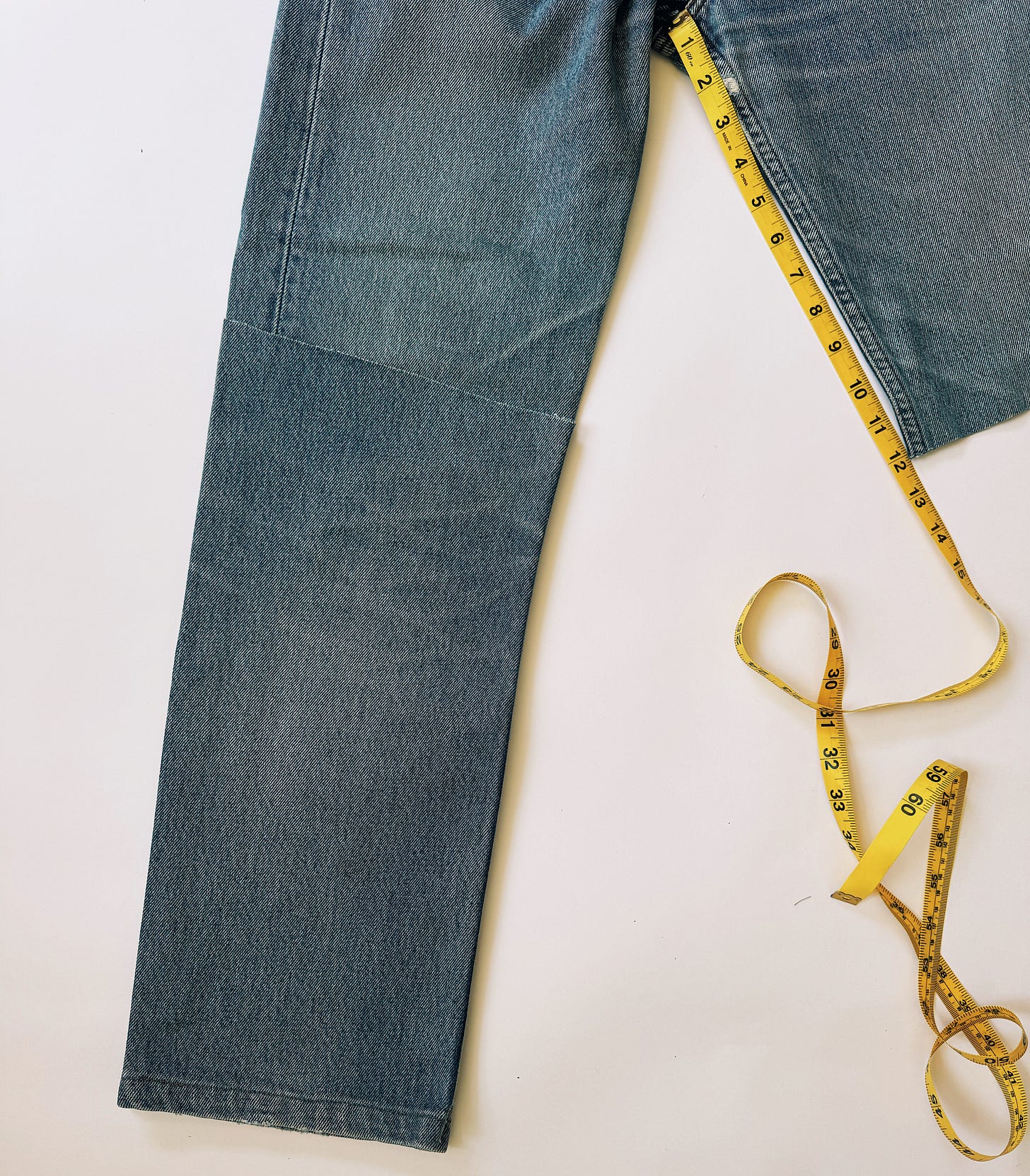
STEP 5: Use a seam ripper to slit the side seams a little. I like a 1 1/2” opening, but you can make it as long as you want. Secure the slit so it doesn’t grow out of control by stitching a simple tack at the top. I like using a tobacco-colored thread (sometimes referred to as pigskin by industry insiders), to match a vintage jean’s top stitch, but navy blue or black also work. Why the slit? It’s a nice detail, plus it keeps our cut-offs from clinging to our thighs and gives them a little kick on the sides. Minor detail. Major points.
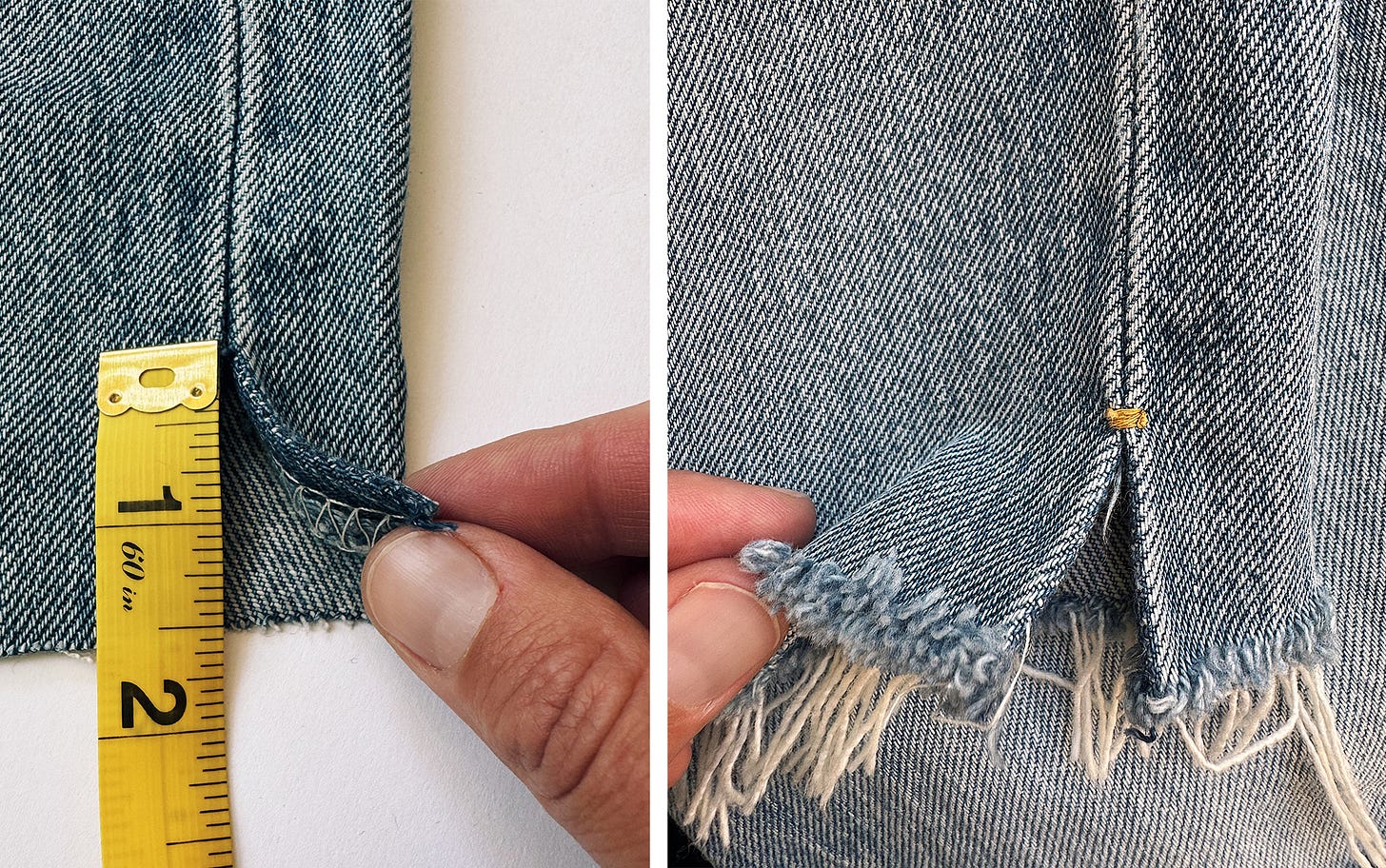
STEP 6: Wash. Cold and quick. To get the edges to fray, we have to put our freshly cut cut-offs in the dryer, something I generally advise us never to do with jeans – vintage jeans, especially. But in this case, tumble dry until damp (not dry-dry), and trim the weft (white) yarns as you like. Be aware, the first wash will not give you the perfect summer-cut-off fringe. That stuff is earned through wear. I’m working on it.

Now. Let’s say we don’t have a pair of epically perfect Levi’s 501s laying around waiting for a new life. Fine. Like I said, any loose, long-forgotten pair will work. Want to know what makes great cut-offs for women? Men’s jeans, which typically have a longer , drop-ier rise and a little more room in the thigh. These AM Originals from Alex Mill – a jean I wore regularly for months – were ideal. (On a separate note: This Alex Mill sweater has been in an open tab for weeks and was this close to making last week’s letter. Red or Cosmic Blue?)
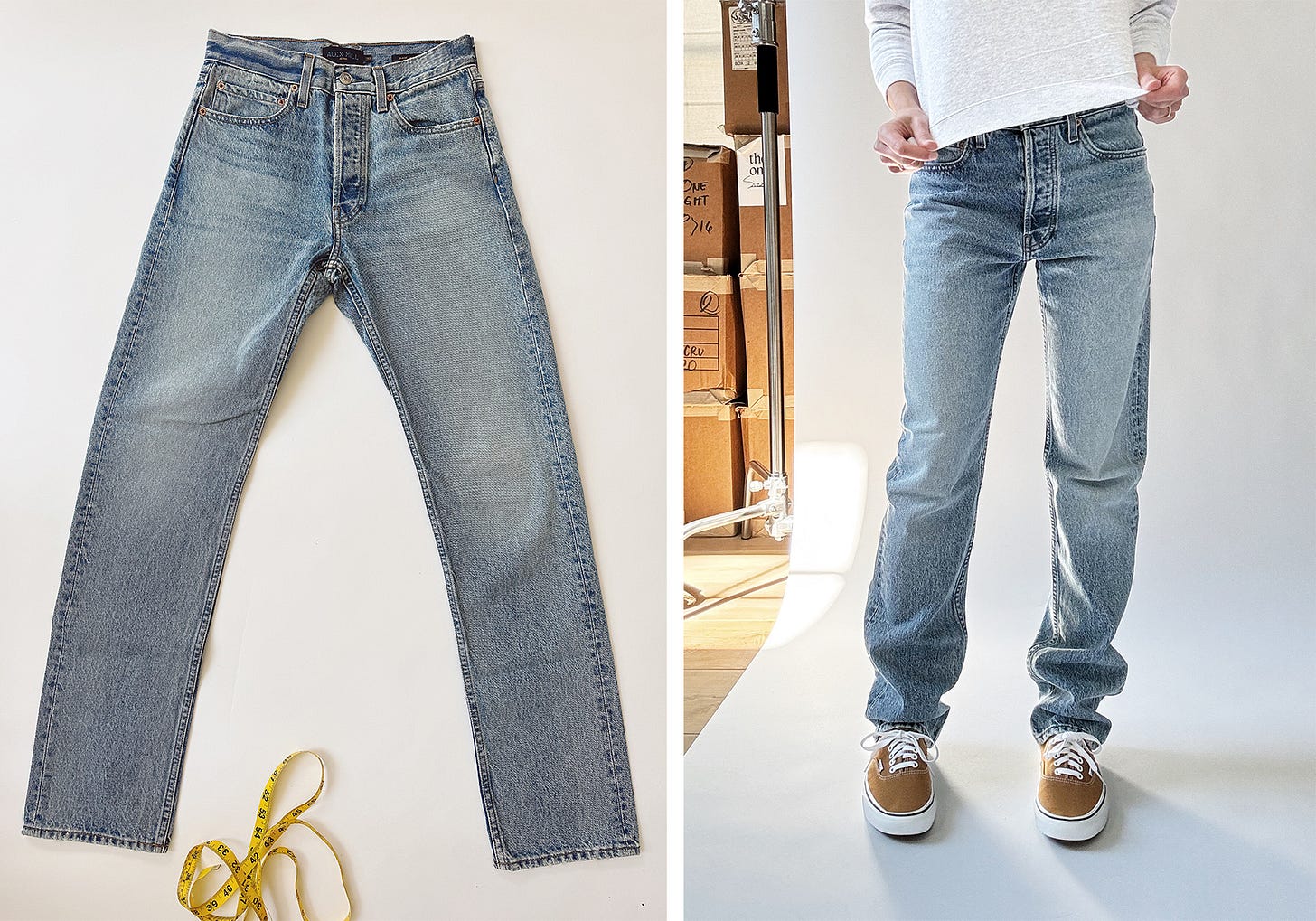
I applied the exact same cutting method to the AM’s and really love how the waist hits and how dropped the crotch is. A very good anti-fit, which is sexy-unsexy and easy to mom in. No regrets.
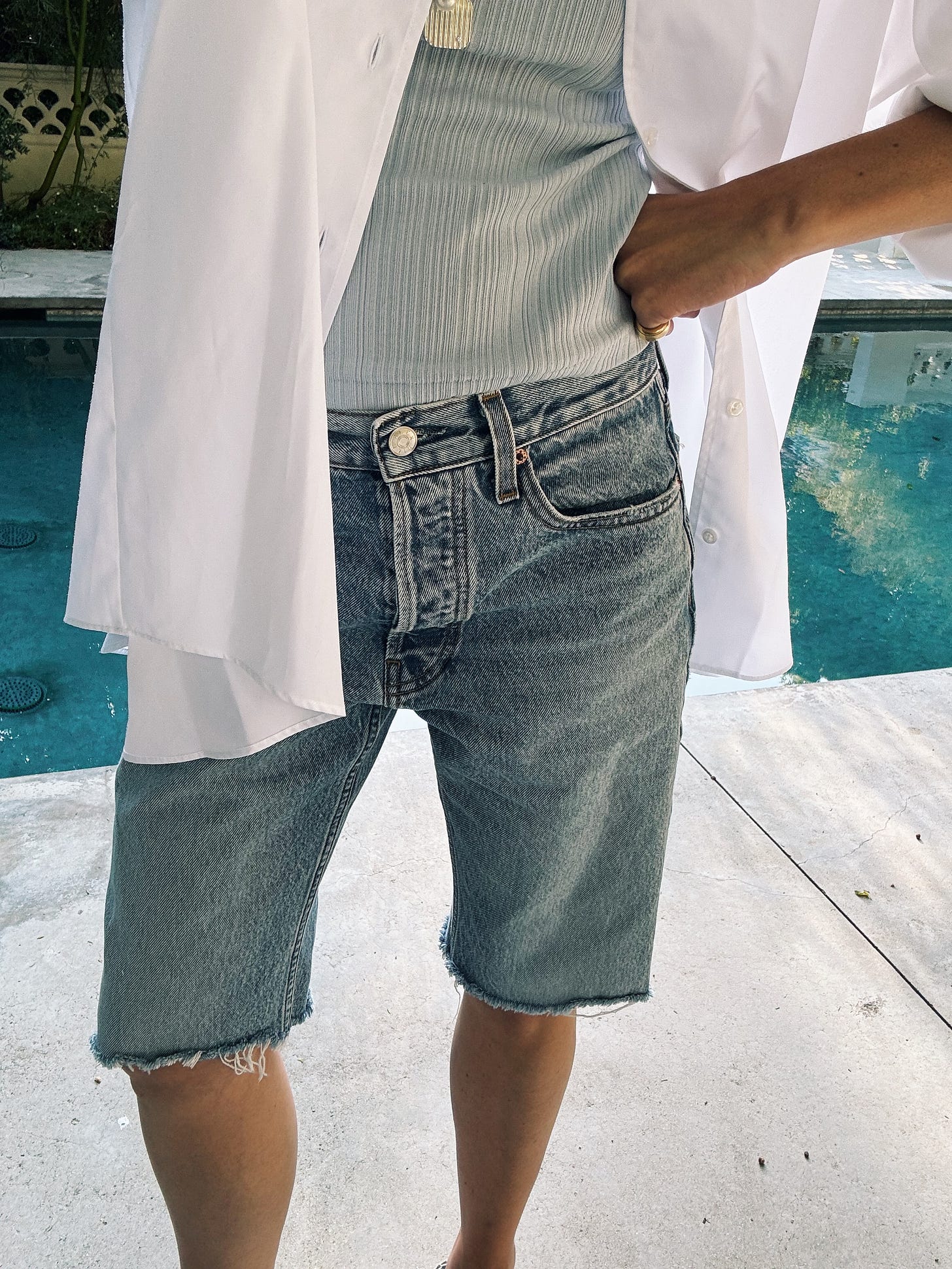
Last thought: I’ve found that wearing cut-offs with anything too casual on top is a level of functional dressing best left to being at home. Instead of the sweatshirt, do the fancy thing. The pearl-trimmed Simone Rocha shirt. Yes, even for camp drop-off, who cares. Every day is all there is, Joan Didion so famously said. When we fail to wear – or cut – out clothes for fear of ruining them forever, we’re missing the point, which is that clothes are not designed to sit in closets. Or stay the same forever. God knows, neither are we.

If you do try this at home, I’d love to know which jeans you cut and how it went. Please like this post if you learned something. Thank you for reading and trusting me with your cut-offs. I’ll be back mid-week with a bonus post, fun! As always, Denim Forever.
Jane
More to read…
My Paige shorts made their first appearance here.
A little video with more nerdy vintage info.
I’m slowly working my way towards owning everything on this list.







Thank you for this perfect guide! I’ve been telling myself all summer to get secondhand men’s jeans to cut off into this exact length, this is the push I needed.
PROFESSIONAL!!! I’m going to be sharing this!!! 🙌🏼🙌🏼